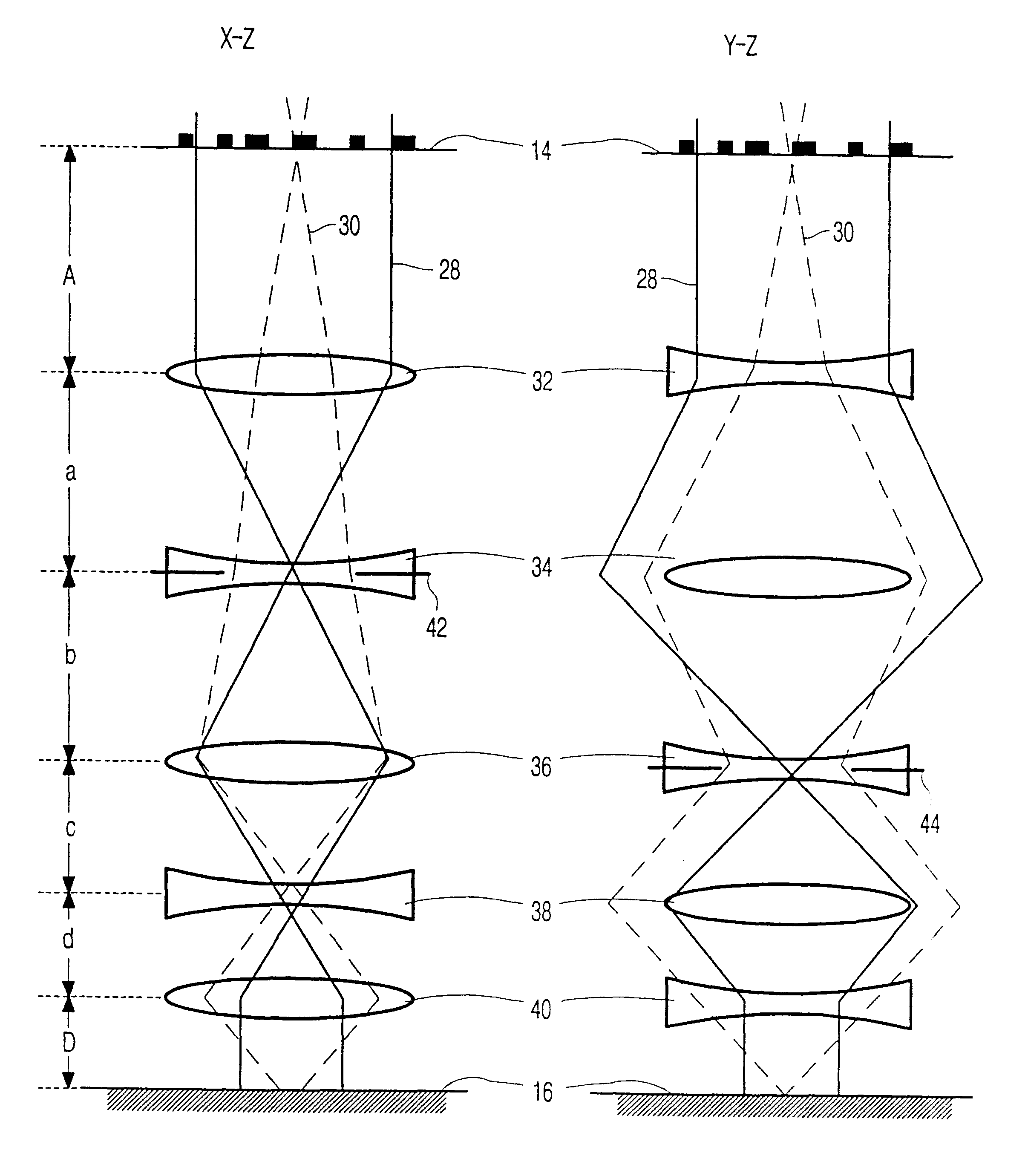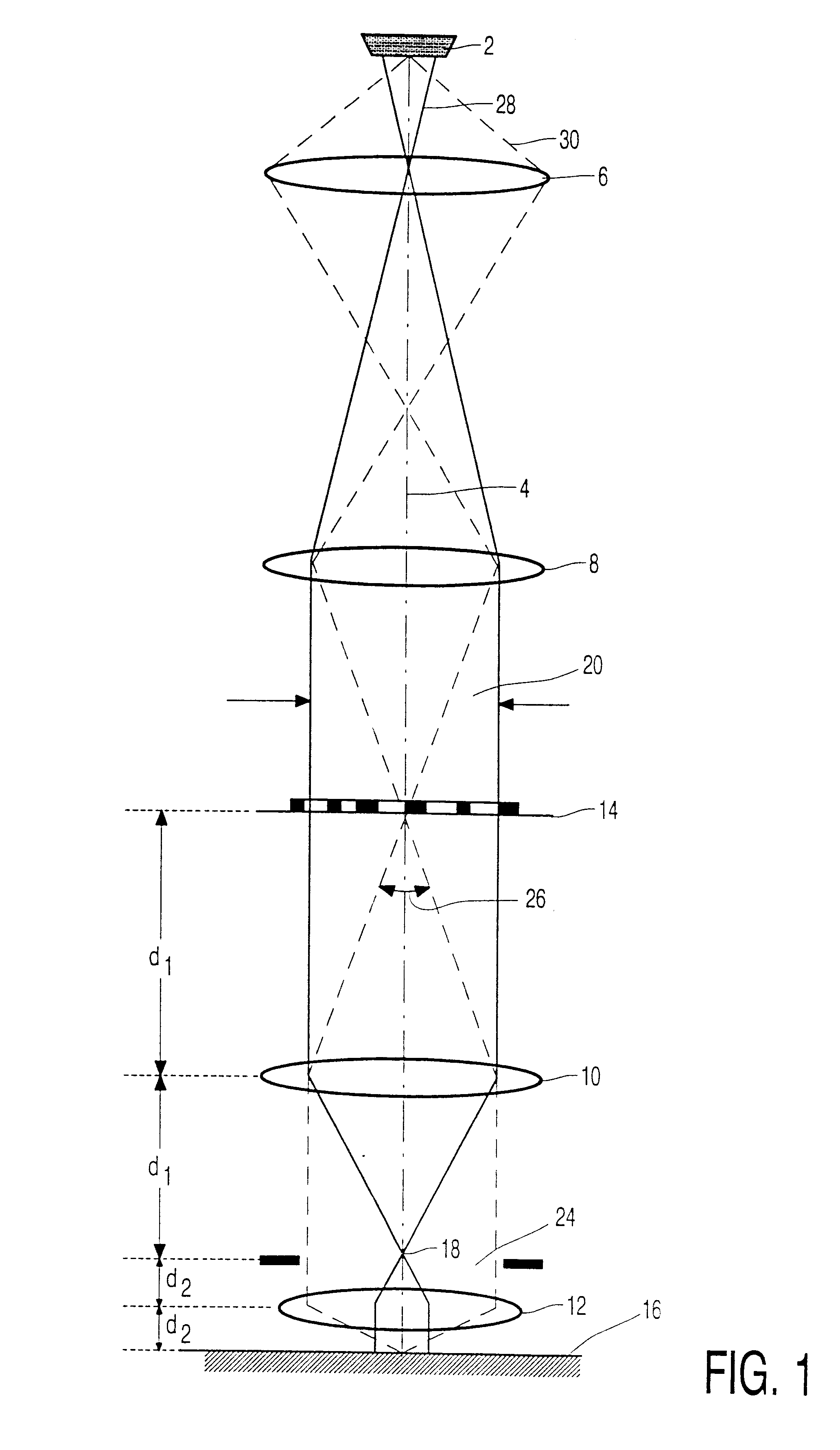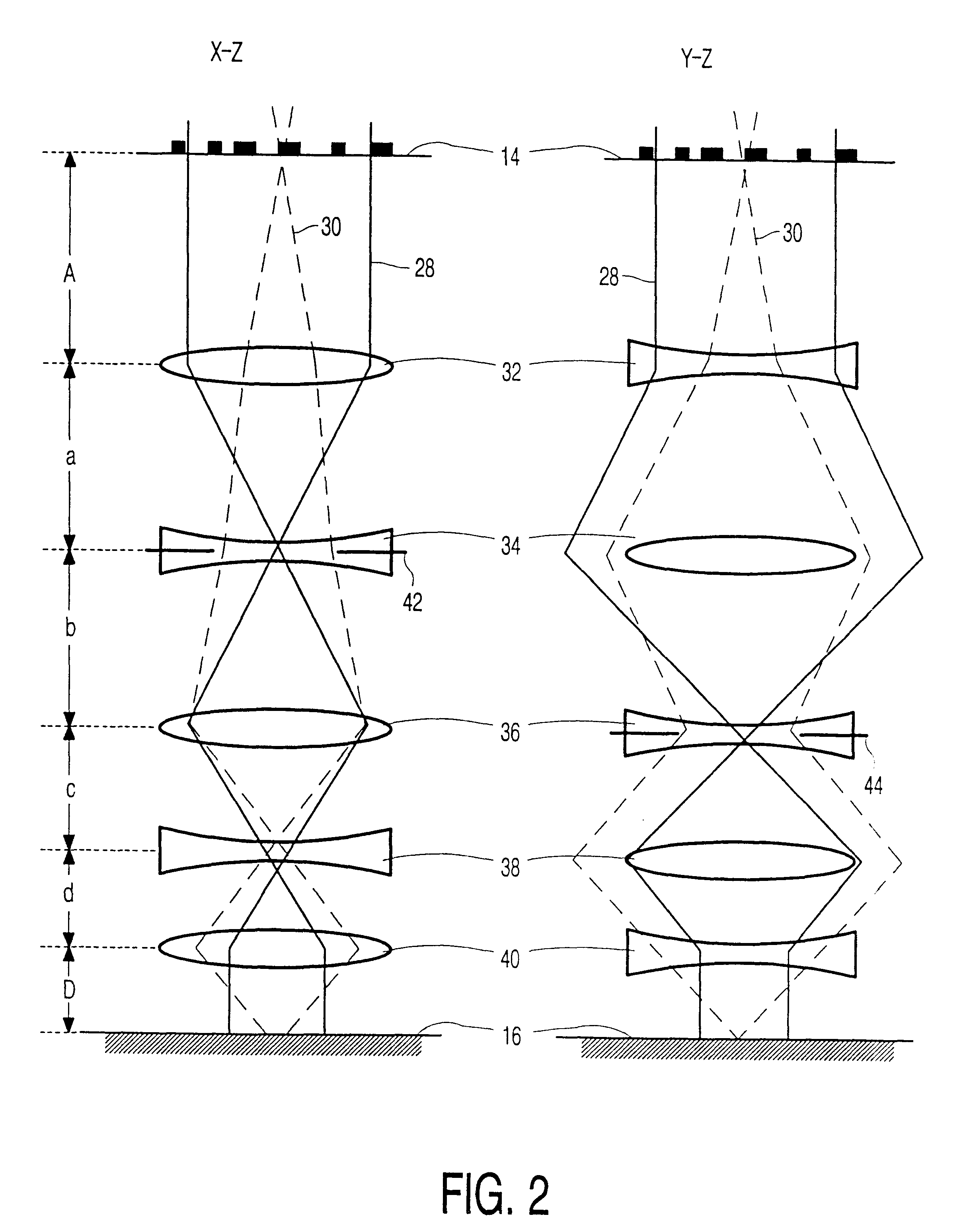Method of forming a quadrupole device for projection lithography by means of charged particles
- Summary
- Abstract
- Description
- Claims
- Application Information
AI Technical Summary
Benefits of technology
Problems solved by technology
Method used
Image
Examples
Embodiment Construction
FIG. 1 is a diagrammatic representation of a state of the art imaging particle-optical system for imaging a lithographic object structure on a lithographic imaging surface. In this Figure an electron beam is produced by an electron source 2. The electron beam travels through the lens system along an optical axis 4. The system shown also consists of two round (i.e. rotationally symmetrical) lenses 8 and 10, whose axes coincide with the optical axis of the system. Both lenses 10 and 12 image a lithographic object structure 14 to be imaged, for example a lithographic mask, on a lithographic imaging surface 16, for example a wafer on which integrated circuits are to be formed. In the system shown, the focal length f.sub.1 of the lens 10 equals 160 mm, like the distance d.sub.1 from the mask 14 to the lens 10. The focal length f.sub.2 of the lens 12 equals 40 mm, like the distance d.sub.2 from the lens 12 and the surface of the wafer 16 to be irradiated. It appears from these numbers tha...
PUM
 Login to View More
Login to View More Abstract
Description
Claims
Application Information
 Login to View More
Login to View More - R&D
- Intellectual Property
- Life Sciences
- Materials
- Tech Scout
- Unparalleled Data Quality
- Higher Quality Content
- 60% Fewer Hallucinations
Browse by: Latest US Patents, China's latest patents, Technical Efficacy Thesaurus, Application Domain, Technology Topic, Popular Technical Reports.
© 2025 PatSnap. All rights reserved.Legal|Privacy policy|Modern Slavery Act Transparency Statement|Sitemap|About US| Contact US: help@patsnap.com



